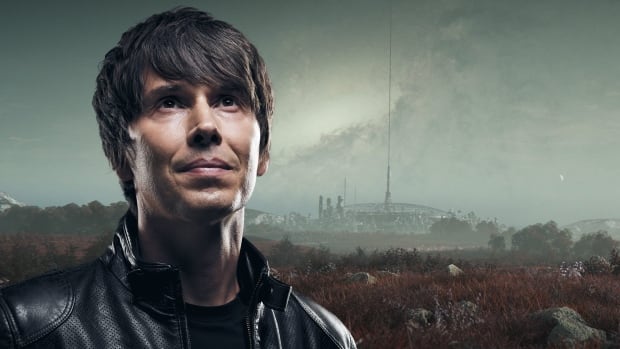
Quirks and Quarks16:47UK science star Brian Cox’s new book explores how we might live in a black hole
Black hole research in the last few years is revealing a tantalizing new view of the very nature of time and space.
In his new book, physicist and science communicator Brian Cox explores how the new physics might help us reconcile the fundamental clash of principals stemming from our understanding of gravity at a cosmological scale and the physics of the minutia that underlies it, quantum theory.
The professor of particle physics from the University of Manchester and the Royal Society spoke with Bob McDonald about his new book, Black Holes: The Key to Understanding the Universe.
Here’s part of their conversation.
You say right in the title of your book that black holes are the key to understanding the universe. How has that become even more true in recent years?
Beginning with Stephen Hawking’s work in the 1970s, it was understood that black holes are not only interesting from an astrophysical perspective, but they actually set up a fundamental clash of principle between the two great pillars of 20th and 21st century physics, which are Einstein’s theory of gravity and quantum theory.
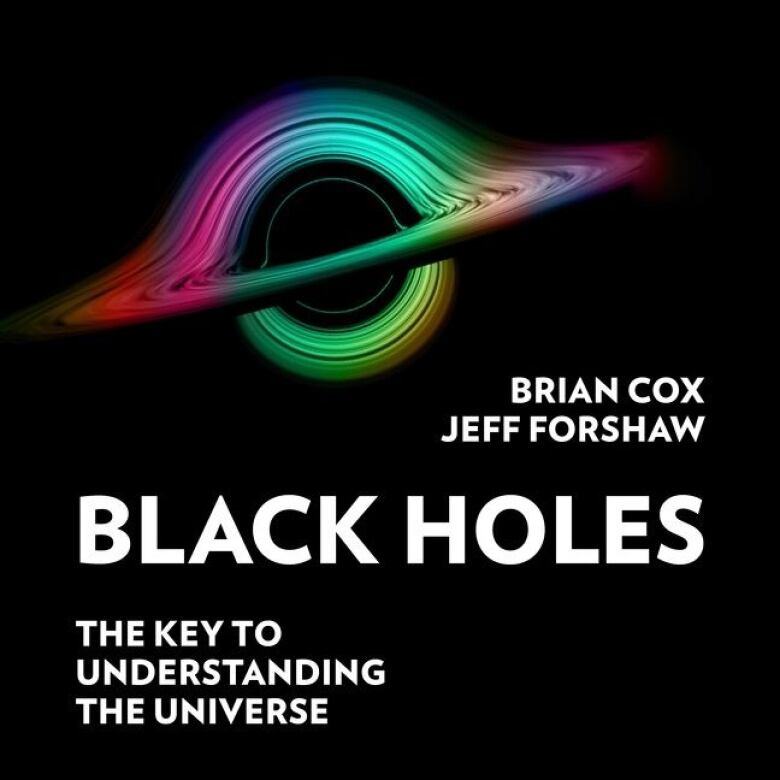
Hawking discovered that when you put those two frameworks together, there’s a prediction, which is black holes have a temperature. Now that was a remarkable discovery because temperature was just a thing you could measure on a thermometer, but it was really only fully understood when we knew that everything is made of atoms.
Temperature tells you how fast the component parts of something are jiggling around and moving.
Contrast that with the description of a black hole. A black hole in Einstein’s theory is just a distortion in the fabric of space-time where even light itself cannot escape. All it is geometry. It doesn’t appear to have any moving parts at all, so immediately back in the 1970s, there was a sign that there may be something deeper to black holes.
A more modern version of Hawking’s discovery is that the temperature of a black hole has to do with the information it can store or hide from us.
When you say information, what do you mean?
Literally bits of information. So Jacob Beckenstein calculated how much information a black hole contains. And he found an astonishing result: the amount of information — in bits literally — that the black hole stores is equal to the surface area of the event horizon of the black hole.
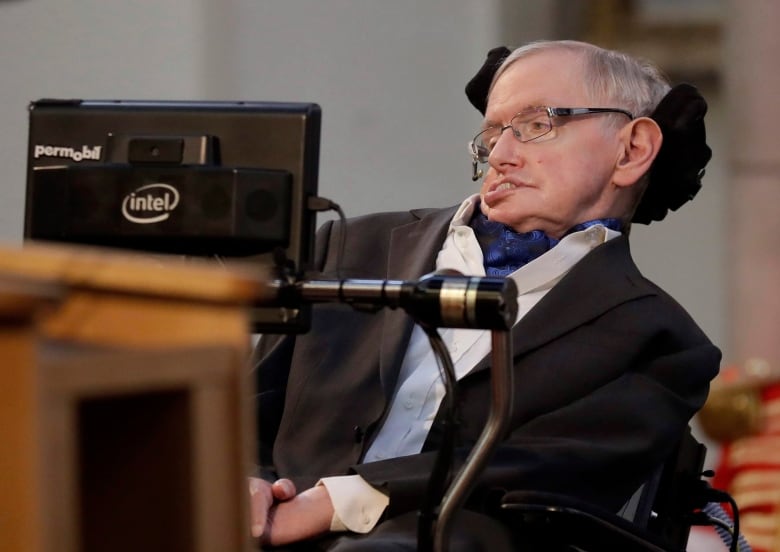
The event horizon is the point of no return.
Yes, the point of no return. But remember, it’s just space. For very big black holes, like the sort you find at the centres of galaxies, you could fall through it and you wouldn’t notice a thing.
When you say bits of information, I usually think of bits that are used in terms of computer science to describe a zero or a one that encodes information. What are the bits of the event horizon in a black hole?
Well, yeah, so that’s what you’re supposed to think. What are they? We don’t know. We seem to know how big they are, so how many pixels there are.
But it’s very strange for two reasons. One is that we’re just talking about space for a start, so what do we mean by a pixel of space? And secondly, this idea that somehow the amount of information is proportional to the surface area.
We say that nothing can come out of a black hole and yet, Stephen Hawking is famous for his Hawking radiation, which does come out of a black hole. And if it has temperature, that’s also something coming out of a black hole. Take me through that.
Stephen Hawking uses an analogy in his 1974 paper to describe what’s happening. You can picture the vacuum of space. If you could imagine zooming in and slowing time down with some great microscope, you could picture the vacuum of space as not being empty, as being filled with particles fizzing in and out of existence all the time.
Imagine that a pair of these particles, which would have come into existence and disappeared again, they can be configured such that one’s on the inside of the horizon and one is on the outside of the horizon.
So that means that the one on the inside is not coming out, but the upshot is the one on the outside that would have gone back and re-merged with its partner, essentially giving its energy back to the vacuum, can be made real and can escape into space.
Not that I want to throw your book into a black hole, but what would happen to it and the information that it contains if I tossed it in?
As viewed from the outside, you can picture the book as being completely incinerated as it approaches the horizon, with all the bits of information being smeared around.
You could almost imagine this kind of hot atmosphere of the black hole, which somehow contains the information and re-radiates it out into the universe again. And that would be essentially what happens when you burn the book.
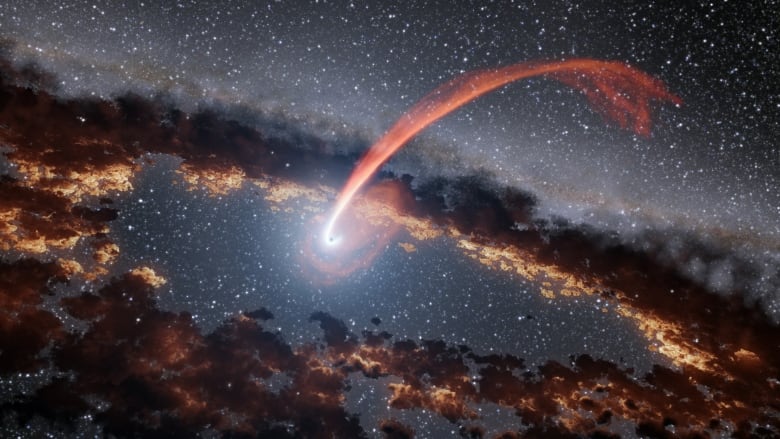
So no problem, except that according to Einstein’s theory of general relativity, you can also ask the question, what does that look like from the perspective of the book or an astronaut falling in? Einstein’s theory is unequivocal. From the perspective of the book or the astronaut, you can fall across the horizon into the interior of the black hole.
Now you have two descriptions of what happened from different perspectives and both are correct.
You said at the beginning of our conversation that this new idea of reality in a black hole is part black hole geometry and part quantum physics. How do we tie those two together to bring us to a new understanding of reality?
So we had these disparate ideas, right? The black hole can somehow store information and it’s something to do with the surface area of the black hole. And then we have this idea that there are different pictures of what happened and that they can both be true at the same time.
The modern view is that all these different pictures are trying to tell us something. And what they’re trying to tell us seems to be that space and time are not fundamental properties of the universe, but they emerge from a deeper theory. And that theory seems to be quantum theory which does not have space and time in it.
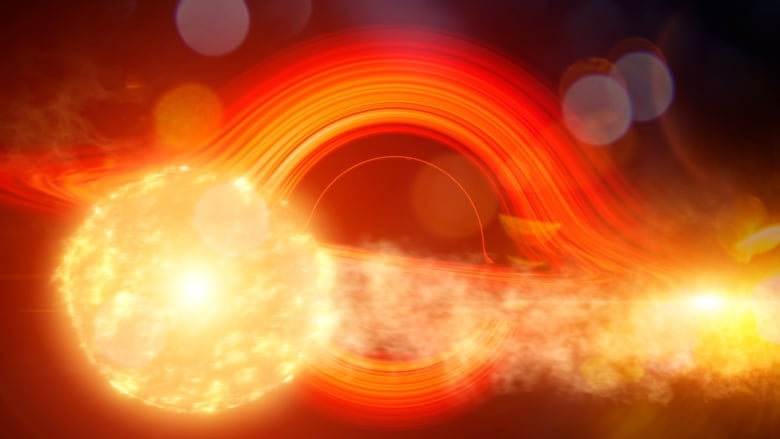
So, the black holes, as we say in the book, they’re like Rosetta stones in the sense that they’re forcing us to discover that there are different descriptions of our universe. One of them is the description of Einstein and then there’s another description, which just looks like some kind of quantum theory, some kind of building blocks of the universe that are entangled together.
And so quantum mechanics allows for this property where things can be related to each other — connected together, if you like. And out of that emerges this other description that we’re familiar with. So it’s almost like the black hole is a naturally occurring object that forced us to glimpse a deeper description of our reality.